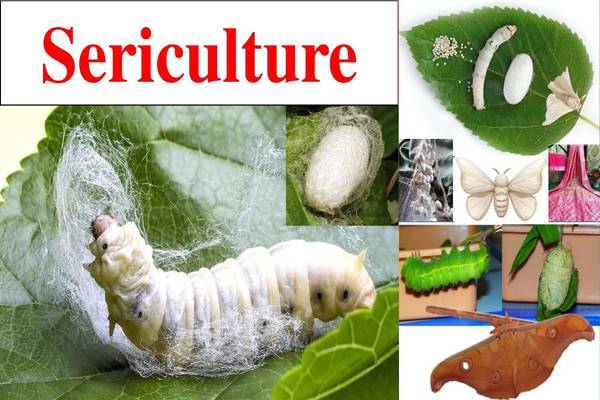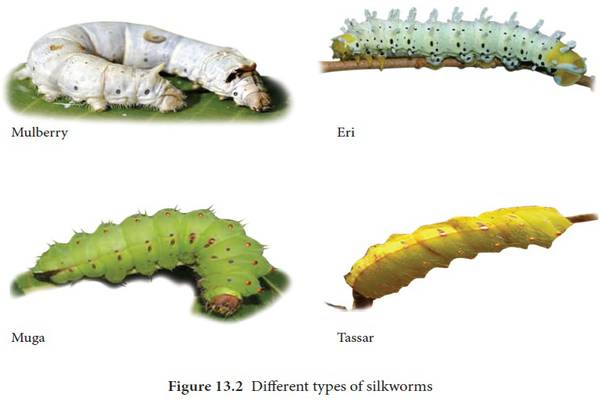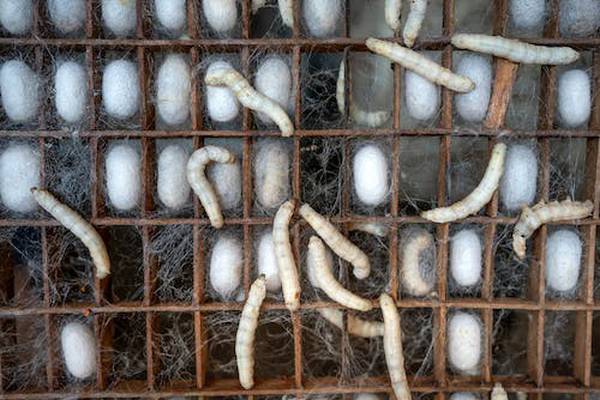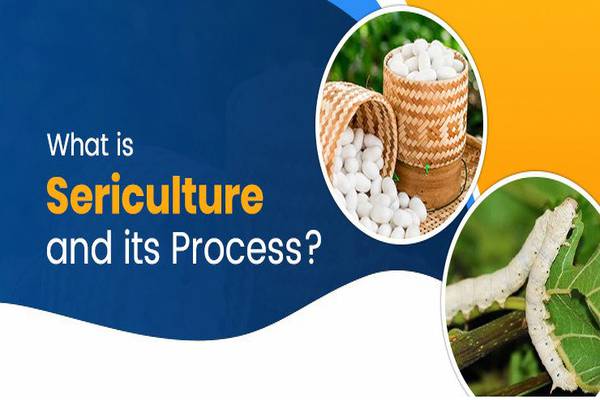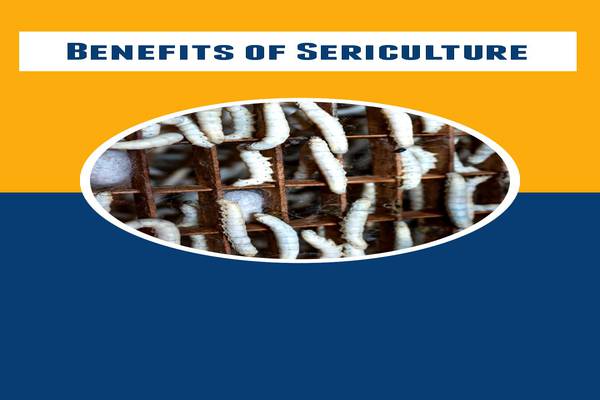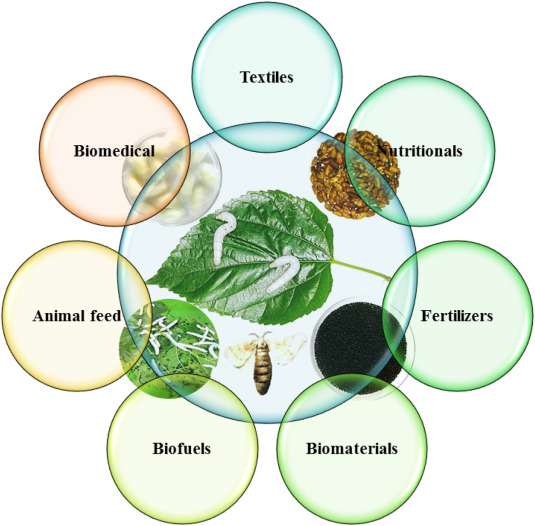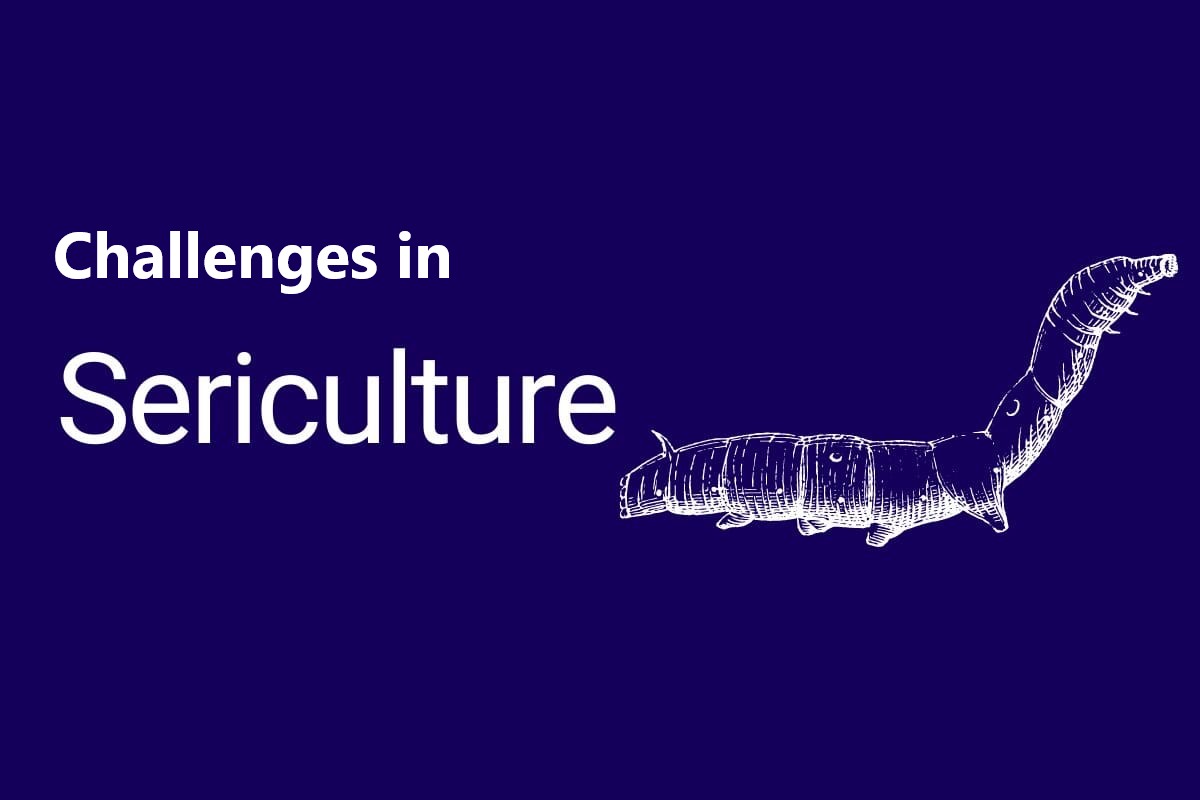Sericulture: Unveiling The Art Of Silk Production
Drafted by: vijaychourey26@gmail.com
Sericulture, often referred to as the art of silk farming, involves the rearing of silkworms to produce the coveted silk fabric. This labor-intensive process is deeply rooted in history and culture, with its origins dating back to ancient China. The technique has since spread to various parts of the world, each contributing its unique touch to the practice.
Types Of Silkworms
Mulberry Silkworms
Mulberry silkworms (Bombyx mori) are the most commonly used silkworms in sericulture. They feed exclusively on mulberry leaves, producing fine and lustrous silk fibers.
Tussar Silkworms
Tussar silkworms (Antheraea mylitta) thrive in tropical conditions. The silk they produce is coarser than mulberry silk, often used for its distinct texture and natural golden hue.
Eri Silkworms
Eri silkworms (Samia ricini) are known for their sustainability. They feed on castor leaves, and their silk is popular for its thermal properties and lightness.
Muga Silkworms
Muga silkworms (Antheraea assamensis) are endemic to Assam, India. Their silk is prized for its natural gold color and durability.
Cultivation Of Silkworms
Selecting Silkworm Varieties
The journey of sericulture begins with selecting suitable silkworm varieties. Bombyx mori, commonly known as the mulberry silkworm, is the most widely cultivated species due to its ability to produce high-quality silk.
Mulberry Cultivation: A Vital Resource
Mulberry leaves serve as the primary food source for silkworms. Mulberry trees are cultivated to ensure a continuous supply of leaves, which are rich in nutrients essential for silkworm growth and silk production.
Rearing Silkworms: Feeding and Care
Silkworm eggs hatch into larvae, which are then reared in a controlled environment. They are fed mulberry leaves and require meticulous care to ensure healthy development.
The Sericulture Process
Rearing of Silkworms
It begins with the careful selection of silkworm eggs, which hatch into larvae. These larvae are fed a consistent diet of mulberry leaves and cared for meticulously as they grow.
Cocoon Formation
As the larvae grow, they start spinning cocoons around themselves using the silk threads they produce. This cocoon formation stage is crucial as it determines the quality of silk.
Harvesting Silk
Before the silkworms break out of their cocoons and damage the silk threads, the cocoons are carefully harvested. The silk threads are then unraveled and processed to create usable fabric.
Benefits Of Sericulture
Economic Significance
Sericulture contributes significantly to the economy, especially in regions where it's practiced extensively. It generates revenue through silk production, job creation, and export opportunities.
Employment Opportunities
The sericulture industry provides employment to a diverse range of individuals, from farmers and spinners to weavers and artisans, thus uplifting local communities.
Sustainable Farming
Silkworms thrive on natural resources like mulberry leaves, making sericulture a sustainable practice. It encourages the cultivation of mulberry trees, which also contribute to soil conservation.
Biodegradable Fabric
Silk is biodegradable and has a lower environmental impact compared to synthetic fabrics. This aligns with the growing demand for eco-friendly materials.
Silk Weaving: Crafting Elegance
Dyeing the Silk
Silk threads are dyed using various natural and synthetic dyes, adding vibrant hues to the fabric. The dyeing process involves careful temperature control and multiple dye baths to achieve the desired color intensity.
The Loom: Where Threads Transform
Silk weaving involves interlacing warp and weft threads on a loom to create fabric. Different weaving techniques, such as satin and twill, produce varying textures and patterns in the fabric.
Weaving Techniques and Styles
From intricate brocades to delicate chiffons, silk offers a canvas for diverse weaving styles. Different regions and cultures have developed their unique weaving techniques, contributing to the richness of silk's aesthetic appeal.
Sustainability In Sericulture
Eco-Friendly Practices
As environmental consciousness grows, sustainable sericulture practices are gaining traction. Integrated pest management, organic farming, and reduced chemical usage are contributing to eco-friendly silk production.
Innovations in Sustainable Sericulture
Researchers are exploring innovative methods, such as lab-grown silk and alternative protein sources, to minimize the environmental impact of sericulture while meeting the demand for silk products.
Environmental Considerations
Pesticide Usage
Conventional sericulture may involve the use of pesticides, which can have adverse effects on the environment. However, efforts are underway to adopt organic methods to mitigate this issue.
Organic Sericulture
Organic sericulture avoids the use of harmful chemicals, promoting healthier ecosystems and producing silk that aligns with environmentally conscious consumer preferences.
Challenges In Sericulture
Disease Management
Silkworms are susceptible to various diseases, which can lead to significant losses in silk production. Effective disease management practices are crucial to maintaining healthy silkworm populations.
Quality Control
Maintaining consistent quality in silk production requires stringent quality control measures at every stage of the sericulture process.
Innovations In Sericulture
Genetic Engineering
Advancements in genetic engineering have led to the development of silkworms with enhanced silk production capabilities, opening new possibilities in silk manufacturing.
Automation in Silk Production
Automation technologies are being integrated into sericulture processes, increasing efficiency and reducing the labor-intensive nature of silk farming.
Future Outlook of Sericulture
The future of sericulture holds promise, with advancements in technology, sustainable practices, and growing consumer awareness aligning to create a brighter outlook for this age-old art.
